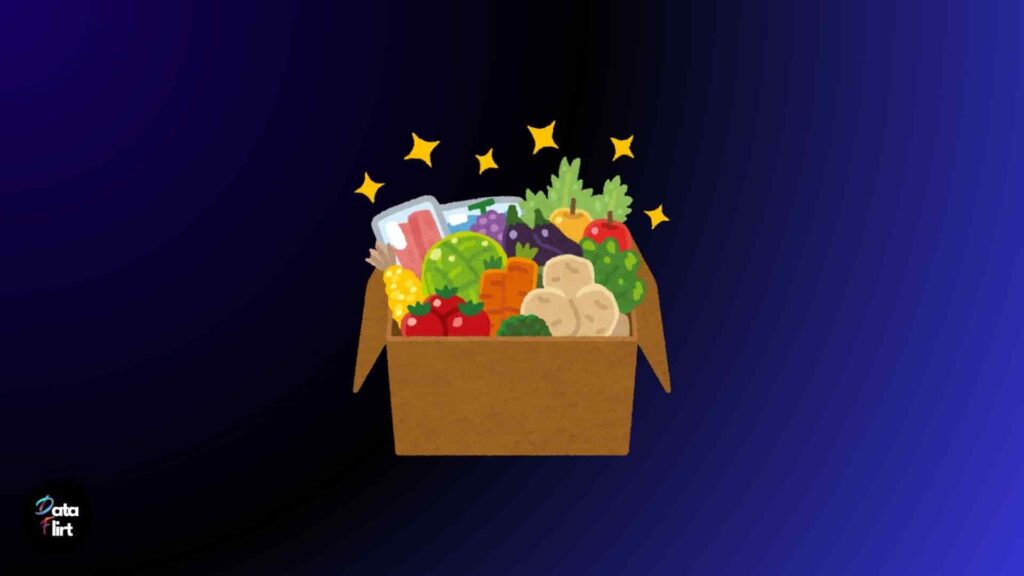Web Scraping Grocery Websites

Have you ever wondered how grocery delivery aggregators can predict what products will fly off the shelves before they even hit the market? In the fast-paced world of grocery delivery, staying ahead of trends is crucial. For entrepreneurs in the grocery delivery aggregator industry, accessing real-time data from grocery websites can unlock insights that drive sales and improve customer satisfaction. What if you could tailor your inventory based on emerging consumer preferences? Or, how about optimizing delivery routes to ensure faster service? Web scraping offers a powerful solution for gathering this critical data, enabling businesses to make informed decisions. But what about privacy concerns or the technical challenges of scraping data? Don’t worry; we’ll explore all of that in detail in this blog!
Web Scraping Grocery Websites- The Why, The What, The How
Web scraping grocery website data is essential for grocery delivery aggregators who want to thrive in a competitive landscape. The ability to collect and analyze data from various grocery websites can help solve significant business challenges, such as understanding pricing strategies, identifying consumer trends, and monitoring competitor offerings. For instance, scraped data can reveal which products are popular in different regions or highlight price fluctuations, helping businesses make strategic decisions. Moreover, scraping data can uncover new opportunities, such as identifying gaps in the market or emerging food trends that can be capitalized on.
When it comes to what to scrape, grocery delivery aggregators should focus on a variety of data points. Here are some key examples:
1. Product names
2. Prices
3. Discounts and promotions
4. Stock availability
5. Customer reviews and ratings
6. Product descriptions
7. Delivery options and fees
8. Brand names
9. Nutritional information
10. Seasonal items
11. Supplier information
12. Product images
13. Categories and subcategories
14. Store locations
15. Customer demographics
16. Purchase frequency
17. Return policies
18. Loyalty program details
19. Market trends
20. Shipping times
To scrape this data effectively, businesses can utilize various tools and methods. There are SaaS platforms like Octoparse and ParseHub that offer user-friendly interfaces, allowing users to scrape data without coding knowledge. For those with some programming skills, open-source libraries like Beautiful Soup and Scrapy can be employed to create custom web scrapers. Additionally, low-code platforms like Apify provide flexibility for those who want to combine ease of use with powerful features. With the right tools in hand, grocery delivery aggregators can access a wealth of data that can drive their business forward.
Use Cases of Web Scraping Grocery Websites
Dynamic Pricing Strategies
By scraping prices from competing grocery websites, delivery aggregators can implement dynamic pricing strategies. This involves adjusting their prices based on competitor pricing, ensuring they remain competitive in the market. For example, if a competitor drops the price of a popular item, the aggregator can quickly respond with a similar price drop to retain customers.
Trend Analysis and Product Selection
Scraping product information and customer reviews allows grocery delivery services to analyze trends and make informed decisions about which products to stock. For instance, if the data reveals a growing interest in plant-based products, the aggregator can expand their offerings in that category to meet customer demand.
Inventory Management
By monitoring stock levels across various grocery websites, delivery aggregators can optimize their inventory management. They can identify which products are frequently out of stock and adjust their purchasing strategies accordingly, ensuring they have the right products available for customers.
Customer Behavior Insights
Analyzing customer reviews and ratings scraped from grocery websites can provide valuable insights into customer preferences and pain points. This information can inform marketing strategies, product development, and customer service improvements.
Regional Market Analysis
Scraping data from grocery websites can help delivery aggregators understand regional preferences and tailor their offerings accordingly. For example, if data shows that organic products are more popular in one region compared to another, the aggregator can adjust their inventory to cater to local tastes.
Promotional Campaign Effectiveness
By tracking promotions and discounts offered by competitors, grocery delivery services can evaluate the effectiveness of their own marketing campaigns. This allows them to tweak their strategies based on what works best in the marketplace.
Supplier and Brand Analysis
Scraping supplier information and brand details allows grocery delivery aggregators to identify potential partnerships with suppliers that offer high-demand products. This can enhance product offerings and improve customer satisfaction.
Delivery Optimization
By analyzing delivery options and fees from various grocery websites, delivery aggregators can optimize their delivery strategies, ensuring they provide competitive delivery fees and fast service to attract more customers.
Nutritional Trends
Scraping nutritional information helps grocery delivery services stay ahead of health trends. For example, if data indicates a rise in demand for gluten-free or keto products, the aggregator can proactively stock these items.
Market Gap Identification
By analyzing product offerings across grocery websites, delivery aggregators can identify gaps in the market. For instance, if certain organic products are consistently unavailable, the aggregator can seize the opportunity to fill that gap.
Challenges in Web Scraping Grocery Websites
While web scraping offers numerous benefits, it also comes with challenges. One of the main challenges is ensuring compliance with legal regulations and website terms of service. Many websites have anti-scraping measures in place that can block scrapers or lead to legal action if not adhered to. Additionally, maintaining the accuracy and relevance of scraped data can be difficult, as websites frequently update their layouts and content. Technical challenges also arise, such as managing large volumes of data and ensuring the scraping process is efficient and does not overload the target website’s servers.
How DataFlirt Can Help You With Web Scraping Grocery Websites?
At DataFlirt.com, we specialize in providing top-notch web scraping services tailored to the grocery delivery industry. Our team of experts can help you gather the data you need to stay competitive and make informed business decisions. Don’t let valuable insights slip away—partner with DataFlirt today and unlock the full potential of web scraping for your grocery delivery aggregator business!